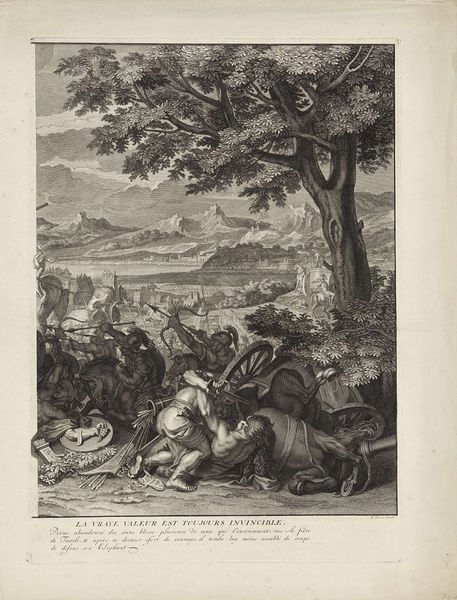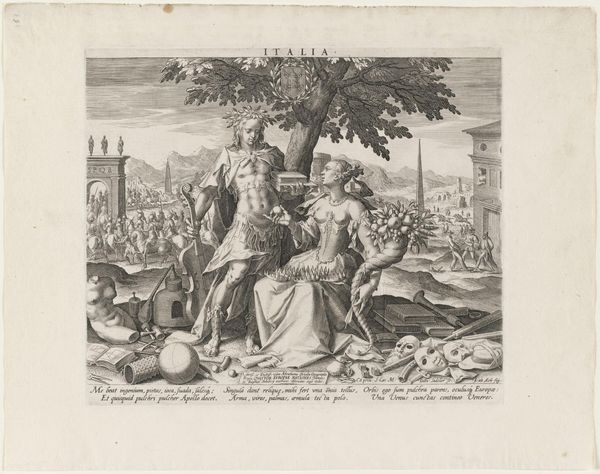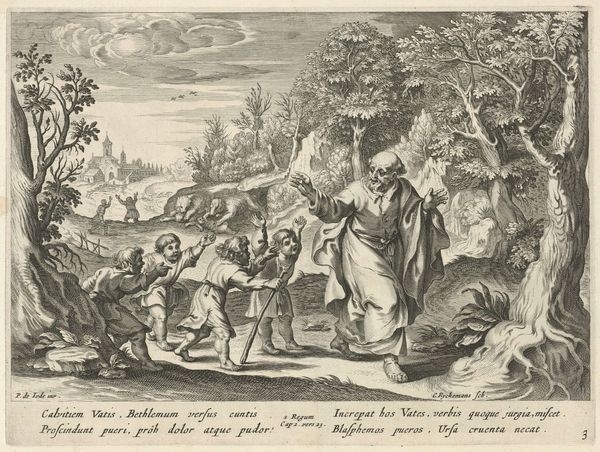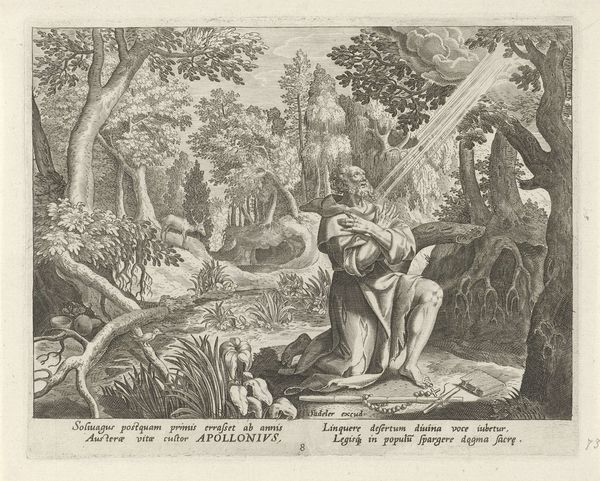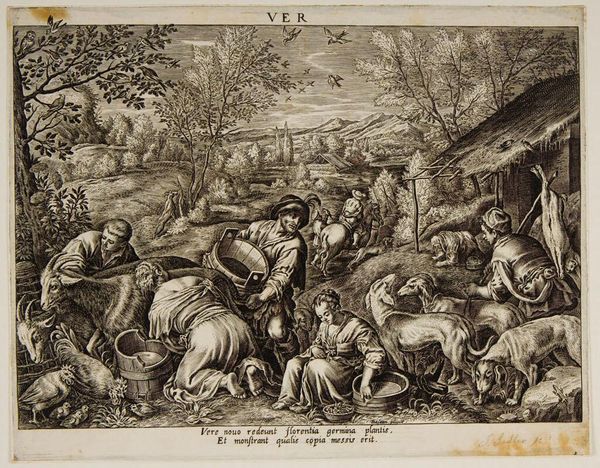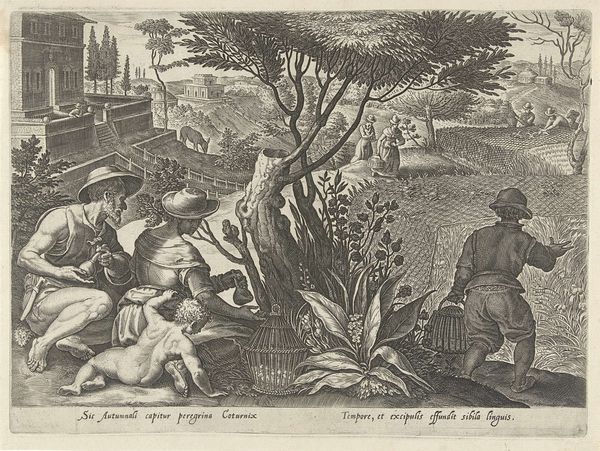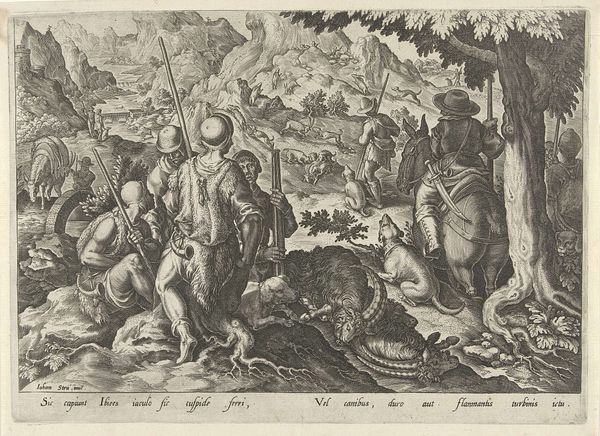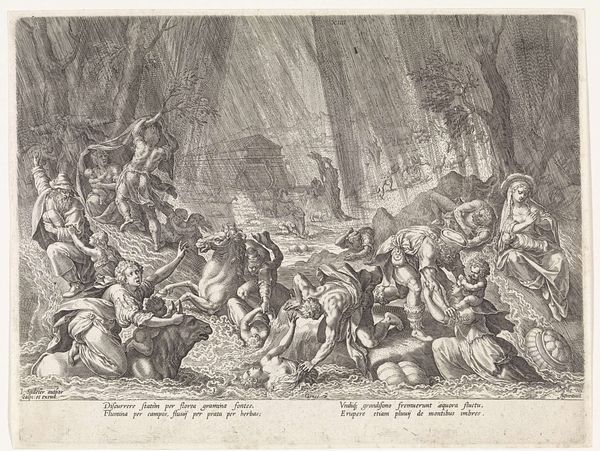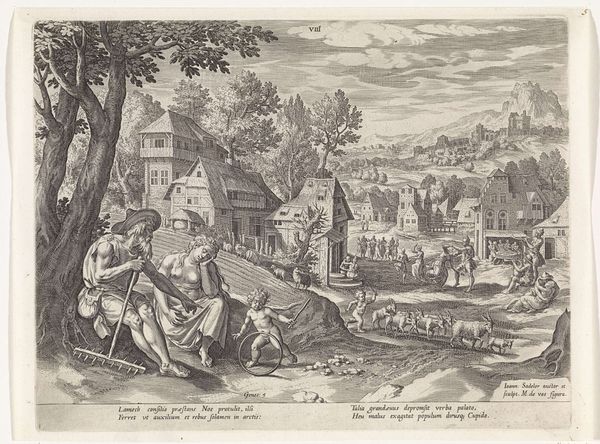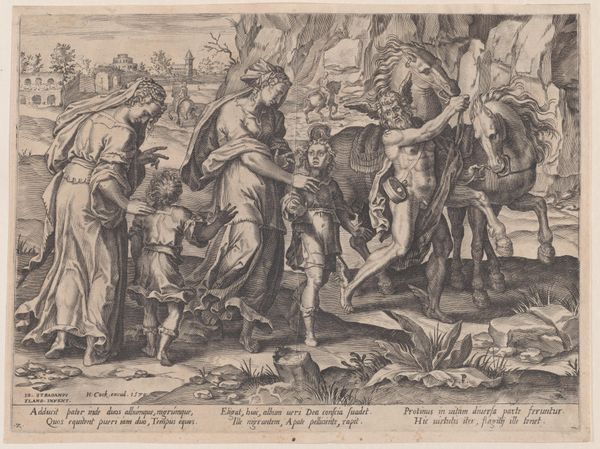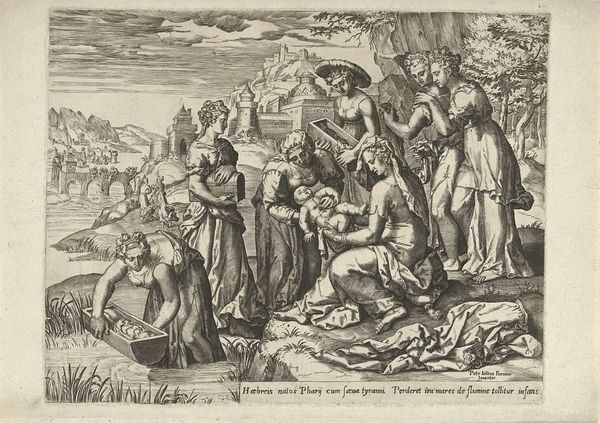
print, engraving
# print
#
landscape
#
mannerism
#
figuration
#
history-painting
#
engraving
Dimensions: height 215 mm, width 263 mm
Copyright: Rijks Museum: Open Domain
Editor: This is "The Calling of Abraham," an engraving by Johann Sadeler I, dating from the late 16th century. I’m struck by the composition; it's very crowded, almost chaotic, yet there’s a sense of calm with the figures resting amidst the animals. How do you interpret this work, considering its visual elements? Curator: Indeed. Observe how Sadeler constructs this pictorial space. The foreground teems with meticulously rendered details – the textures of the animal hides, the folds of the garments, the rough bark of the trees. All this, however, contrasts sharply with the hazy, almost dreamlike quality of the background landscape, unified by a subtle use of tonal variation. Editor: Yes, the contrast is really striking! It’s like two different worlds coexisting. The textures and details create a certain immediacy. But then there is the background and I noticed what appears to be some sort of celestial event in the upper part. Curator: Precisely. The dynamic line cutting through the clouds and mountains leads the eye to and emphasizes this transition, it serves as a kind of semiotic break, dividing the space in a sophisticated fashion, in an orderly and very elaborate construction to give prominence to what is most relevant: divinity as a separate plane from the natural. Sadeler utilizes the full potential of the engraving medium here. Editor: So, the formal elements contribute to a reading that separates divinity from the world? Curator: Yes, absolutely. The work presents a symbolic gesture to divinity; a carefully crafted visual hierarchy where textural density in the foreground leads towards ethereal landscapes, reflecting the very message of Abraham’s calling. Do you appreciate this strategy? Editor: Definitely. Looking at it this way reveals how the engraving isn't just depicting a scene but constructing meaning through form and structure. Thanks, I see much better now!
Comments
No comments
Be the first to comment and join the conversation on the ultimate creative platform.
